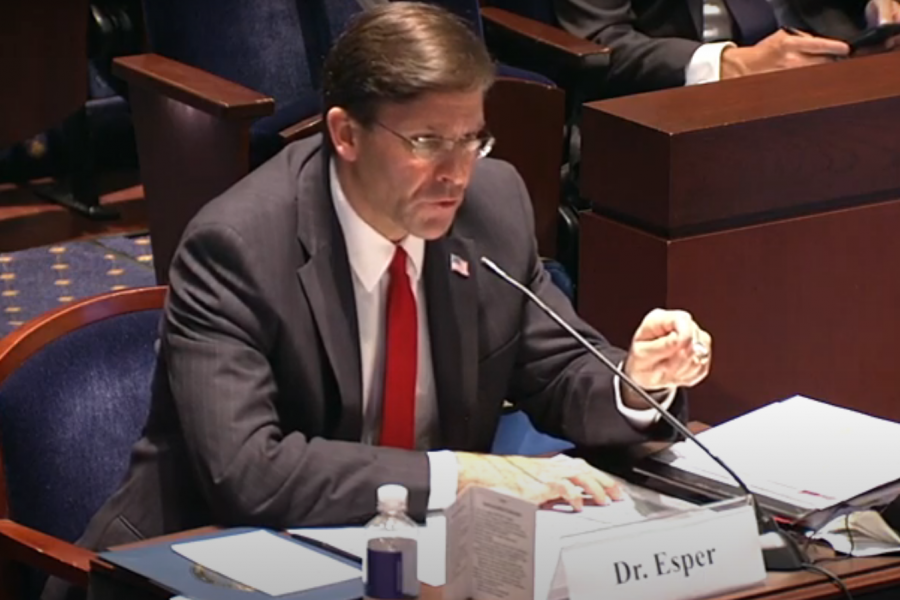The Pentagon is wrapping up multiple reviews of how the military supported local law enforcement and deployed aircraft during widespread protests across the country, particularly in Washington, D.C., the Pentagon’s top leaders told House lawmakers July 9. Officials are also looking for lessons that help avoid confusion during similar events in the future.
At its peak, the National Guard deployed 43,000 personnel to assist law enforcement nationwide in response to protests and riots sparked by the May 25 killing of George Floyd, an unarmed black man who died at the hands of Minneapolis police. During the upheaval in late May and early June, troops tried to control crowds by flying helicopters low over the heads of protesters in Washington, D.C., and Air National Guard surveillance planes flew tracks over multiple cities to funnel information to police.
Defense Secretary Mark T. Esper, in testimony to the House Armed Services Committee on July 9, said an Army investigation into the use of the UH-72 Lakotas, including one marked with a red cross denoting its medical mission, to suppress civilian crowds is in its final stages of review.
The investigation, which Esper said he ordered within two hours of learning of the incident, will include “authorization to hover, property damages, and any violations of privacy.” He also directed Air Force Secretary Barbara Barrett to investigate the “exact facts and circumstances” of Guard RC-26s flying over protests on June 2-3.
Esper and Chairman of the Joint Chiefs of Staff Gen. Mark A. Milley said initial violence in the nation’s capital drove the decision to activate the Guard and to bring in, but not deploy, Active-duty Soldiers. From the beginning, Esper said he spoke to service members to enforce their role as support personnel and to remind them of their oath to serve and protect the Constitution, including the right to peaceably assemble.
Guard forces stood behind local law enforcement as they dispersed protesters from Lafayette Square in downtown Washington on June 1, and neither Esper nor Milley could say who gave the order to begin clearing protesters. A broader follow-up review on the Lafayette Square incident and D.C. response will be released by the end of the month.
A federal program that lets law enforcement agencies use excess military equipment also prompted confusion about which personnel patrolling the streets belonged to which organization. Milley said it “became an issue” when military members in camouflage uniforms stood alongside similarly dressed police and others in Washington.
“You want a clear definition of that which is military and that which is police,” Milley said, adding there needs to be “clear distinction” because military forces conducting law enforcement would be a major escalation.
Additionally, Esper said that during the effort to clear Lafayette Square, the Guard units let civilian police use their riot shields with “military police” labeled on them. In the future, people need to find a way to cover the “military” part of the label to make clear who is in charge of crowd control at the moment, Esper said.
As chaos spread, other entities outside the United States sought to capitalize on it and create division, Milley told the panel. Politico reported June 1 that Russia and China had launched disinformation campaigns related to U.S. police brutality, using social media to spread divisive messages and criticize the federal government.
“There’s no doubt in my mind that foreign adversarial countries are taking advantage of civil unrest in the United States,” Milley said.
